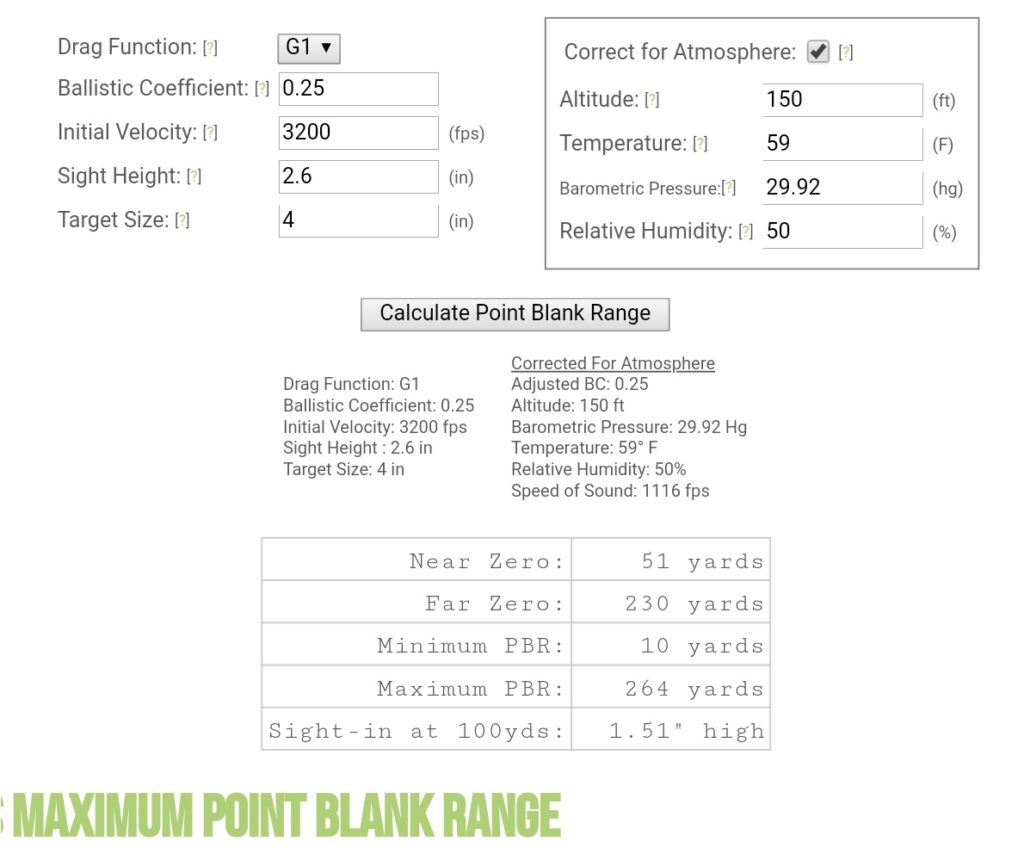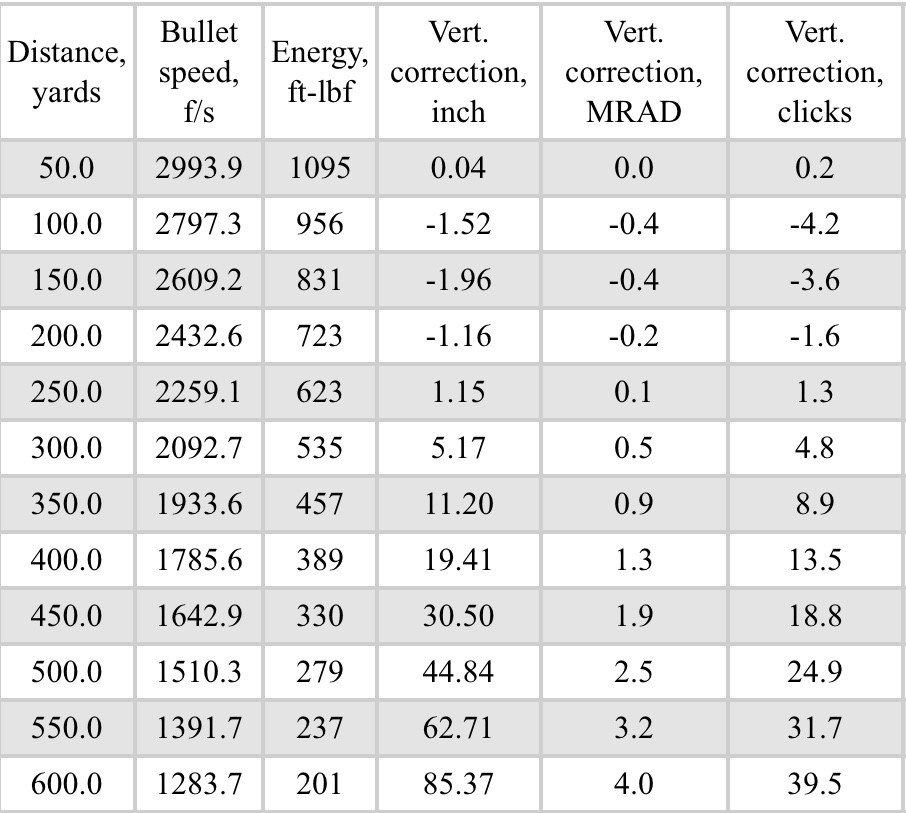Ahhhh, the combat AR carbine. Among AR lovers there exists a sort of balkanized hodge podge of factions and tribes. Some like this, others that. Arguments happen and sometimes friends part ways forever….OK I’m being a little dramatic.

The beauty of the platform of course is that it can be whatever you desire. Long range paper killer to house clearing cannon, it can meet whatever mission you need inside it’s inherent limits. It is modular and adaptable.
One recent discussion I was involved in was about zero. It seems that ideas abound and opinions vary (who knew?) About this topic. The thing is, no matter how you zero your carbine you need to understand its capabilities and limits.
Some like a 100 yard zero because that is how their 30-06 is set up. Some like the old 300 yard military zero. Some like the improved battle zero. Some have no idea.

To some of you, this will be rehashing basics, but I have encountered MANY newly awakened folks who do not know this stuff. Not knowing basics will get you killed.
The following is my opinion and I am not disparaging yours. You are welcome to do whatever you choose in zeroing your rifle, this is how I zero mine and suggest to new AR shooters to zero theirs. The military is using this now and many smart shooters, I don’t want to debate you, OK?
The vast majority of shots with a 5.56 carbine in a combat scenario are under 200 yards. Now I know Afghanistan had plenty beyond this, but it is the exception and not the rule. In fact, I believe in a real breakdown of civility in the US, most shots taken for real will be under 50 feet…yes feet.
For us civilians, the chance we would need to shoot at persons beyond 200 yards in a SHTF situation is pretty slim. The situations where such a long shot were to be taken that could be called self defense are very few. I am not naive enough to think that such a shot might not be necessary but let’s not get wrapped around the axle here. Now, I know I’ll get a comment from someone in Montana who has a 1000 yard line of sight from his porch. You are the exception brother and should probably be using .308 or Creedmoor.
*Edited to add* I know some consider the 5.56 to be a “poodle shooter”. If you are one of the magical people who can shoot your .308 as fast and as accurately as a 5.56 and believe it sucks the souls out of bad people I am absolutely good with it. The point of the post here is not to say you’re wrong, it is to help the new survivalist zero their carbine in a way that helps them be effective shooters.
John Mosby had the following to say about the 5.56
This conversation is not intended to instigate a debate on the merits of the Stoner platform versus anything else, nor is it intended to foment discussion on 5.56 versus 7.62. The first has been completely dispelled, in the realm of this blog at least, by the refusal of all those opposed on principle to Stoner’s design, to accept my standing challenge on the “Last Word” page. The second is simply not open to discussion here. I KNOW 5.56 kills people, dead. I know 7.62 kills people, dead. I choose 5.56 because it kills people, dead, plus I can carry more of it, meaning, when necessary, I can kill more people, dead. Additionally, because it has less felt recoil, I can kill them faster, because shot-to-shot recovery is faster. Are there guys out there that can recover from 7.62 as fast, or faster, than I can from 5.56? Perhaps, but those guys don’t need any advice on setting up their fighting rifle. Most guys can’t recover from 5.56 as fast as I can from 7.62. I choose 5.56 because it works, for me. I don’t moderate comments, but I WILL delete comments that hold no merit to the conversation, on this article, if the only thing you have to say is along the lines of “Stoner was stoned!” or “Mouseguns!” –J.M.
The military has adopted the improved battle zero and it goes like this. You zero at 50 yards (your near zero) and your shot is back dead on at around 225 or so (your far zero). This can vary with barrel length and whether 55 or 62 grain but it is close enough for what we are discussing.


The above means simply, your shots are in a 4″ circle from spitting distance to about 260 yards. No holding over required, center mass hold gets good hits.
Basically in theory, you are shooting in a 4″ tube out to 2.5 football fields distance with no muss or fuss, just hits. Add in the less than MOA performance of most bulk mil-spec ammo and your likely less than solid rest and this zero gets you on a paper plate or so out to 200 or a little better. This is EXCELLENT combat ready marksmanship if you can hold that steady. If you can shoot paper plates standing at 250 yards with your heart pounding and bullets coming back your way, you are GTG. See why opening up your circle with a farther far zero is problematic? Your mid trajectory is very high, with other factors added it can cause misses under stress.
What we are talking about here is the MPBR, max point blank range. This means we set a target size or maximum deviation from line of sight. If we choose 4” target size what we are wanting is the zero that would cause our projectile to never go more than 2” above or below our line of sight or point of aim. If you know your loads BC and real velocity you can calculate a more precise close and far zero. This calculator will do that for you.
http://www.shooterscalculator.com/point-blank-range.php
For me the best zero for a 4” target is exactly 51 yards. As you can see below, my 16” carbine with 1-4x will shoot inside a 4” circle out to 264 yards. No thinking about it, just hold and hit….which is in and of itself quite a feat in dire circumstances.

Open up the circle to a 6″ minimum and you could zero at 44 yards, be back dead on at 260 and be in the circle to 300. To me this is the max and could cause misses when your hold is less than perfect and the target was in the mid range of around 100 to 150 yards because you projectile will be traveling 3 inches above point of aim in this range (and that is in a perfect world with a perfect hold).
The problem with the old 300 yard zero that the military used to use is that you end up about 10” high at around 200 yards and to me that ends up being just too much of a varying POI for a carbine that will be used closer, rather than farther. See the graphic below, the 25 yard zero is the same as the old 300 yard marine zero. Add in the shakes, return fire and bulk ammo and you may now be shooting in a very big circle and that is simply too much deviation for a carbine. All shooting is precision shooting, sometimes the circumstances will require surgical shooting.

In my mind it is simpler to use the 50\200 and know that at 300 yards I need to hold about 1\2 mil high, about 1 mil high at 350 and about 1.5 mils high at 400. Everything inside 250-260 is a dead hold.
You may decide on something else. That’s OK. Just know how it works and understand how to utilize what you decide on. The military uses the 50\200 now and it has been proven as a solid concept.
I punched in some numbers to Strelok Ballistic Calculator and got the following. It assumes M193 55 grain at 3200 FPS in a 16″ barrel.

The chart can show you what we’re talking about here and what your holds with a mil based reticle will be to 500 yrds. Of course you can just dead hold to 250 and get solid hits.
With a 51 yard zero, you would hold .5 mils at 300, 1 mil at 350, 1.5 mils at 400, 2 mils at 450, 2.5 mils at 500. Pretty easy to memorize or have it on your rifle’s scope cover. If you are using irons or a dot it becomes much harder to judge those holds past about 300 yards but … you cannot identity a target with a 1x at this distance anyway. 1-?x scopes are king on a do-it-all carbine.
I have already posted about mil based reticles and how they are used.
Of course, open sights and red dot optics work with this concept and will allow you to shoot about as far as you possibly can unmagnified. With a magnified optic longer shots are as simple as using your reticle for holdover.
For my 10.5” AR pistols the velocity drops a good amount and the zero changes to a close zero of 43 yards MPBR. In this shorter barrel velocity drops to between 2650-2700. A 43 yard close zero means a dead hold, inside a 4” circle out to about 225 yards. This is about as good as I can hold standing with a 2 MOA dot anyway. I’m older and so are my eyes, gotta deal with it.
There are a good amount of BDC reticles out there for certain loads. I don’t like them myself as you are locked into one load. Again, if you like it, great. Just know how to use it.
Get out there and get this stuff figured out while you can. Actually shooting your rifle after inputting ballistic data into a calculator is mandatory. Different loads chrono at different velocities in different rifles and in different environmental conditions.
Don’t keep thinking about it, get out there and DO IT. Know your rifle and how it is setup and shoot it regularly. Time is short.
Tick Tock.



10″ high@ 200 yds with a 300 yd zero is incorrect.its a little over 5″.that said,I Agree,200 yd zero is the most practical/forgiving .556 zero.out in this part of the country a 300 yd zero on your 270 or 7 mag hunting rifle is very practical/forgiving.but a long action hunting rifle and a 556 battle rifle ARE two completely different worlds.Good article
Well in my software, a 25 yard zero gives the 10+ inches I referenced. The far zero ends up somewhere around 350 if I remember correctly. If I set it for a far zero or 300 then I see the 5 or so inches high you referenced.
Neither is a good way to setup the rifle.
Thanks for reading and keeping me straight.